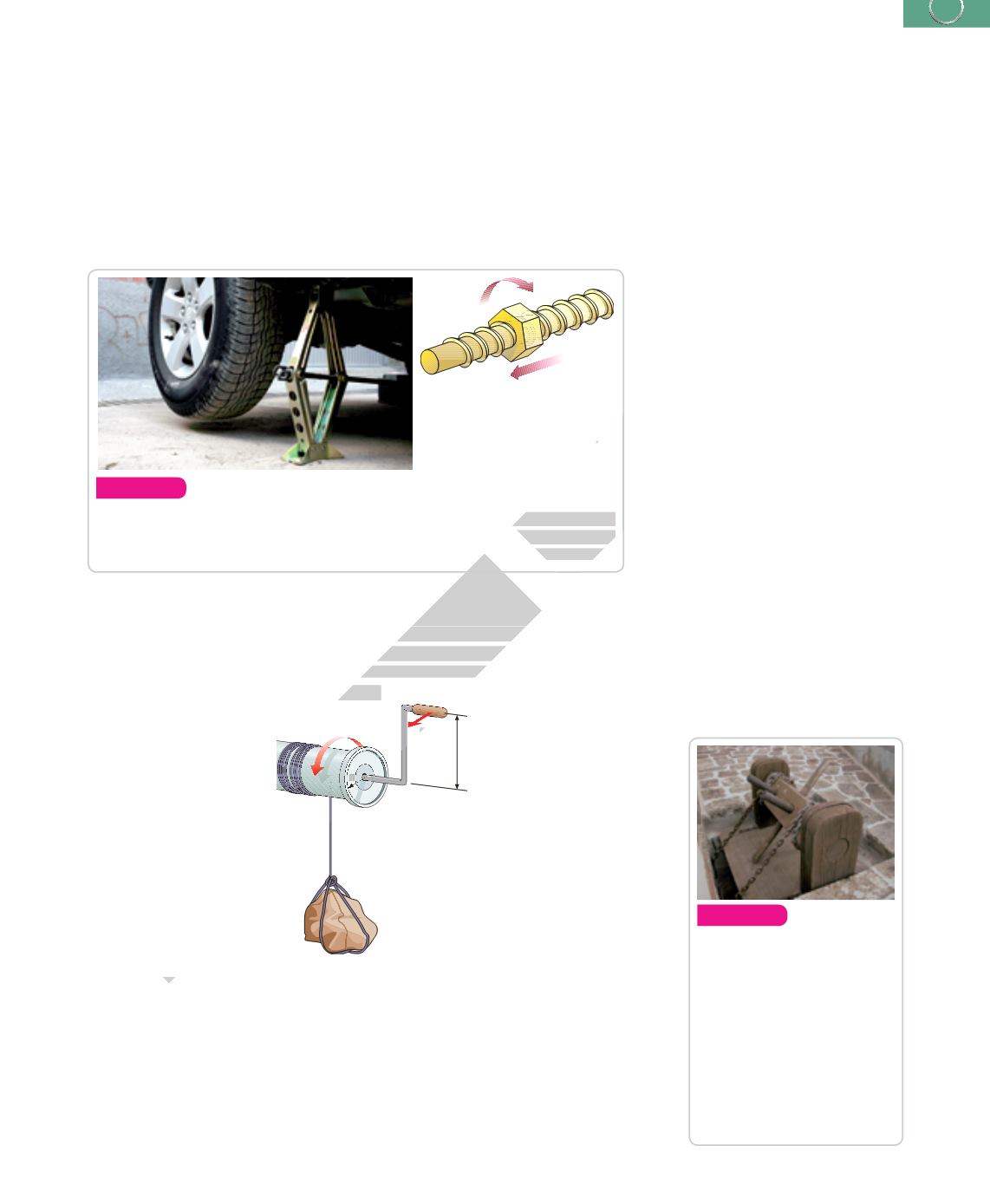
113
5. Mechanisms
www
Analyse
26.
Study the wooden
mechanism on the right.
Locate the winch and
crank parts. How does
this mechanism work?
Why has it got short
wooden bars? Why is
there one long bar in the
centre? What was this
mechanism probably used
for in the past?
Analyse
25.
Look at the scissor jack on this page. How many nuts and bolts has the
scissor jack got? Do the nuts rotate in this mechanism? What happens
when we turn the bolt? What mechanism can we use to turn the bolt?
Nut and bolt mechanism
A nut and bolt mechanism transforms rotary motion into linear motion. It has two
parts: a bolt or shaft with a spiral groove and a nut that turns around it. We can turn
and tighten the nut in order to hold things together. If the nut is held in place, we
can turn the bolt to make it move forward. In this way, we can use a nut and bolt
mechanism to lift loads because it functions as a reducing system.
Applications
:
we use nuts and bolts to hold things together. We also find them in
scissors, jacks for lifting cars, water tap mechanisms and screw-top bottles.
The increase in force is proportional to the ratio between the radius of the crank
and the radius of the winch. These ratios obey the Law of the Lever.
F
·
d
=
R
·
r
We use winch and crank mechanisms to lift or pull heavy loads. These mechanisms
should also include a braking system to avoid accidents.
Applications
:
we use winches for lifting loads. We find them in construction cranes
and in the mechanism that raises window blinds in our homes.
d
F
r
R
Winch and crank mechanism
A winch is a cylinder that rotates around a horizontal axis. We attach a rope to the
winch and to a load. Then we turn the crank to rotate the winch. The rope rolls up
around the winch and lifts the load. The crank increases the force and the winch
transforms rotary motion into linear motion.
A scissor jack is a nut and bolt
mechanism
ADVANCE
EDITION


